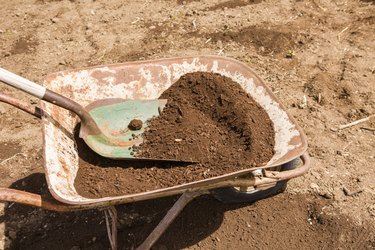
When it comes to starting a garden or establishing a new lawn, all dirt is not created equal. Fill dirt and topsoil are both used to fill in spaces that are lacking in soil, but they differ substantially in composition and in costs. Both fill dirt and topsoil are sold in bulk by the cubic yard. One cubic yard covers approximately 50 square feet with 4 to 6 inches of soil.
Getting the Right Soil
Video of the Day
Fill dirt is used when large, empty spaces need filled, such as a former inground swimming pool hole or a natural depression that is going to have a structure put on it. Topsoil is generally reserved for the top several inches of the ground, to provide a proper foundation for new grass or fill in a garden spot where a gardener wants to establish new plants.
Video of the Day
Understanding Composition
Fill dirt often has debris in it such as rocks, roots and large clay clumps. Screened fill dirt that is certified free of most debris is available at a higher cost. While most commercially sold topsoil is free from large debris, the only requirement is that it was collected from the top few inches of ground. In general, topsoil is richer and has more nutrients than fill, but its content is not legally guaranteed. Always request screened topsoil and ask for a breakdown of its composition.
Customizing Your Order
Soil can be mixed by the supplier depending on your needs. Talk to the vendor and ask what your options are and how you can customize your order of soil. Depending on your plans, certain soil types may meet your gardening needs best. For example, higher amounts of sand help soil drain quickly while clay retains moisture. Organic matter also improves drainage as it conditions soil and adds to soil fertility. Matching soil composition to the needs of your plants helps ensure garden success.
Choosing Wisely
Ideal topsoil should be a screened combination of sand, clay and organic material with a pH level acceptable to healthy plant growth. Most plants grow best in a near-neutral range between 6.0 and 8.0 pH. While topsoil varies significantly, standards do exist. Topsoil that meets the specifications of the American Society of Landscape Architects is certified to have acceptable amounts of clay, sand and organic material, and meet standards for cleanliness and pH balance. Never buy non-certified topsoil sight unseen.